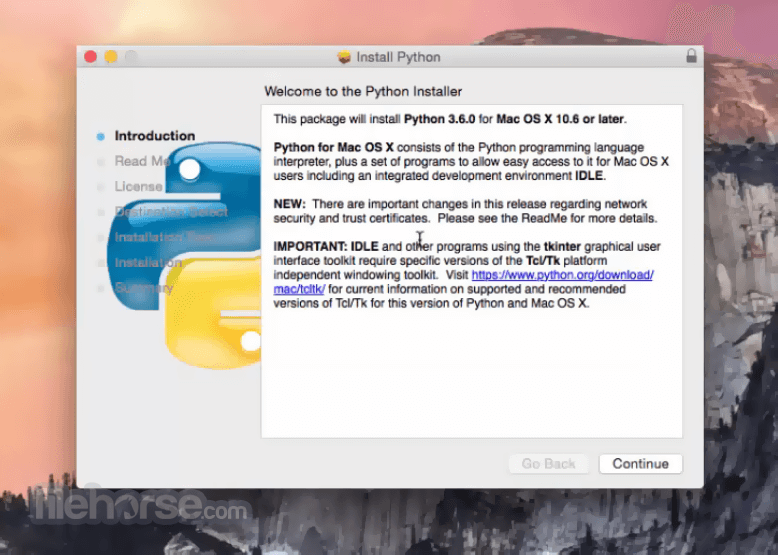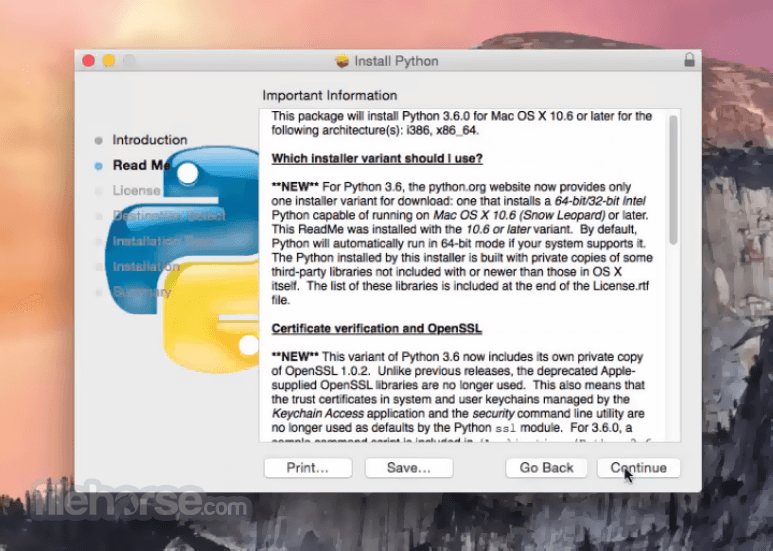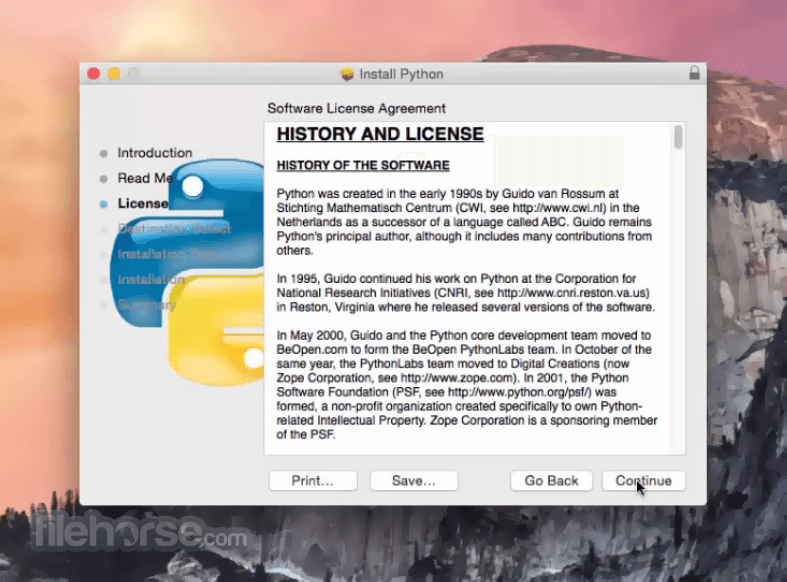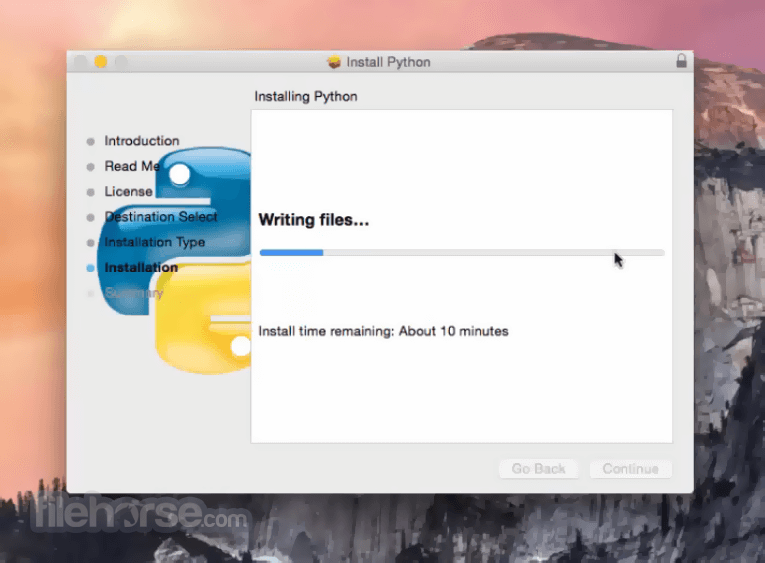-
Latest Version
-
Operating System
Mac OS X 10.9 or later
-
User Rating
Click to vote -
Author / Product
-
Filename
python-3.11.1-macos11.pkg
Sometimes latest versions of the software can cause issues when installed on older devices or devices running an older version of the operating system. Software makers usually fix these issues but it can take them some time. What you can do in the meantime is to download and install an older version of Python 3.11.1.
For those interested in downloading the most recent release of Python for Mac or reading our review, simply click here.
All old versions distributed on our website are completely virus-free and available for download at no cost.
We would love to hear from you
If you have any questions or ideas that you want to share with us - head over to our Contact page and let us know. We value your feedback!
What's new in this version:
General changes:
- PEP 657 -- Include Fine-Grained Error Locations in Tracebacks
- PEP 654 -- Exception Groups and except*
- PEP 680 -- tomllib: Support for Parsing TOML in the Standard Library
- gh-90908 -- Introduce task groups to asyncio
- gh-34627 -- Atomic grouping ((?>...)) and possessive quantifiers (*+, ++, ?+, {m,n}+) are now supported in regular expressions.
- The Faster CPython Project is already yielding some exciting results. Python 3.11 is up to 10-60% faster than Python 3.10. On average, we measured a 1.22x speedup on the standard benchmark suite. See Faster CPython for details.
Typing and typing language changes:
- PEP 673 -- Self Type
- PEP 646 -- Variadic Generics
- PEP 675 -- Arbitrary Literal String Type
- PEP 655 -- Marking individual TypedDict items as required or potentially-missing
- PEP 681 -- Data Class Transforms
More resources:
- Online Documentation
- PEP 664, 3.11 Release Schedule
- Help fund Python and its community
And now for something completely different:
- Quark–gluon plasma (QGP) or quark soup is an interacting localized assembly of quarks and gluons at thermal and chemical equilibrium. The word plasma signals that free colour charges are allowed. In a 1987 summary, Léon van Hove pointed out the equivalence of the three terms: quark-gluon plasma, quark matter and a new state of matter. Since the temperature is above the Hagedorn temperature—and thus above the scale of light u,d-quark mass—the pressure exhibits the relativistic Stefan-Boltzmann format governed by temperature to the fourth power (T^4) and many practically massless quark and gluon constituents. It can be said that QGP emerges to be the new phase of strongly interacting matter which manifests its physical properties in terms of nearly free dynamics of practically massless gluons and quarks. Both quarks and gluons must be present in conditions near chemical equilibrium with their colour charge open for a new state of matter to be referred to as QGP.
- In the Big Bang theory, quark–gluon plasma filled the entire Universe before matter as we know it was created. Theories predicting the existence of quark–gluon plasma were developed in the late 1970s and early 1980s. Discussions around heavy ion experimentation followed suit and the first experiment proposals were put forward at CERN and BNL in the following years. Quark–gluon plasma was detected for the first time in the laboratory at CERN in the year 2000.
 OperaOpera 109.0 Build 5097.68
OperaOpera 109.0 Build 5097.68 PhotoshopAdobe Photoshop CC 2024 25.7
PhotoshopAdobe Photoshop CC 2024 25.7 PrivadoVPNPrivadoVPN 3.8.11
PrivadoVPNPrivadoVPN 3.8.11 ReiBootTenorshare ReiBoot iOS for Mac 9.4.4
ReiBootTenorshare ReiBoot iOS for Mac 9.4.4 Adobe AcrobatAdobe Acrobat Pro 2024.002.20687
Adobe AcrobatAdobe Acrobat Pro 2024.002.20687 OKXOKX - Buy Bitcoin or Ethereum
OKXOKX - Buy Bitcoin or Ethereum ParallelsParallels Desktop 19.3.0
ParallelsParallels Desktop 19.3.0 TradingViewTradingView - Track All Markets
TradingViewTradingView - Track All Markets CleanMyMacCleanMyMac X 4.15.3
CleanMyMacCleanMyMac X 4.15.3 4DDiG4DDiG Mac Data Recovery 3.4.2
4DDiG4DDiG Mac Data Recovery 3.4.2











Comments and User Reviews